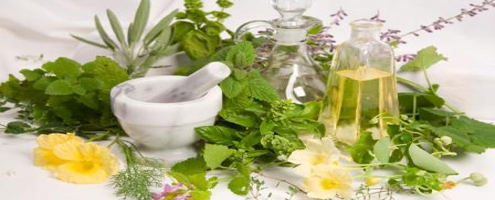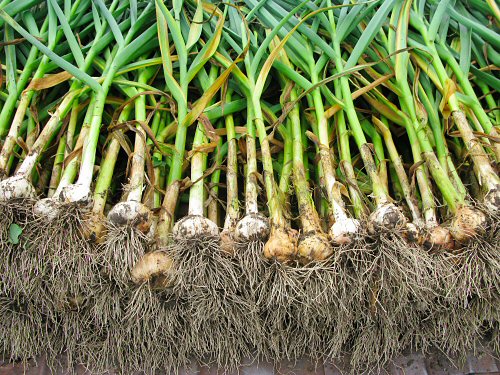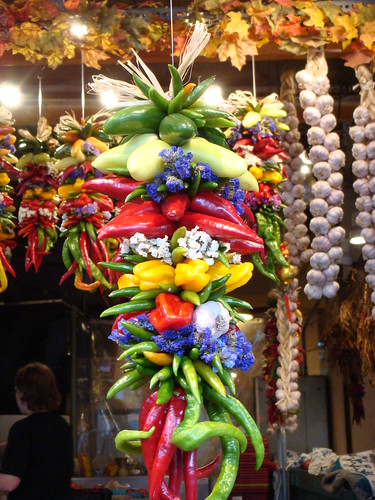Did you know that there is National Garlic Day? No?!
Yes, there is such a day, and it’s always on April 19, so it was couple of days ago. You actually cannot find it in the calendar, but if you search on the Internet, you will get some information about it.
National Garlic Day promotes the many uses of garlic. And, there certainly are many uses. It is a vegetable. It is an herb. It is used in recipes around the world. Garlic has been used medicinally for thousands of years, and garlic is believed to ward off evil spirits. Folklore stories tell that garlic repelled vampires, protected against the Evil Eye. The only negative thing you can say about garlic is that it can negatively affect a romantic evening.
Here is an interesting video about Garlic Festival in California.
Celebrate National Garlic Day by using it heavily in your meals and snacks today. Add more garlic to your menu everyday. Spend some time researching medical benefits of garlic.
Garlic History
Garlic History
The word garlic comes from Old English garleac, meaning "spear leek". 6,000 years ago garlic was one of the most common product in the Mediterranean region, as well as a frequent seasoning (or spice) in Asia, Africa, and Europe. Egyptians worshiped garlic and placed clay models of garlic bulbs in the tomb of Tutankhamen - famous Egyptian pharaoh. Garlic was highly valuable and it was even used as currency.

Garlic has been used as both food and medicine in many cultures for thousands of years, dating back to when the Egyptian pyramids were built. In early 18th-century France, gravediggers drank a concoction of crushed garlic in wine they believed would protect them from the plague that killed many people in Europe. More recently, during both World Wars I and II, soldiers were given garlic to prevent gangrene.
Surprisingly, garlic was frowned upon by foodie snobs in the United States until the first quarter of the twentieth century, being found almost exclusively in ethnic dishes in working-class neighborhoods. But, by 1940, America had embraced garlic, finally recognizing its value as not only a minor seasoning, but as a major ingredient in recipes.
Medicinal Value
Since ancient times, Garlic has been hailed for it's medicinal value. It was used to treat a wide variety of aches. Current research suggests it helps in lowering cholesterol, provides protection against heart disease, reduces cardiovascular diseases, helps to relieve colds and flu symptoms and even prevents cancer. It has anti-bacterial effect, reduces the buildup of plaque in arteries and prevents atherosclerosis. It’s used as a treatment for acne, warts, toothaches and fights gastro-intestinal diseases.
Garlic contains non-nutritive plant chemicals that have protective or disease preventive properties. They are called phytochemicals. They are nonessential nutrients, which means they are not required by the human body for sustaining life, but help people to stay healthy. It is known that plants produce these chemicals to protect themselves, but they can also protect humans against diseases.
Too often when people are sick, they just don't know what to do. More and more people are starting to distrust doctors and their drugs, but in a time of illness or infection they're unsure where to turn. Unfortunately, this uncertainty leads many people to doctors' offices for drugs that ultimately do more harm than good. So, here's some simple advice: if you need something that functions like an antibiotic, turn to garlic instead.
Garlic is a powerful, natural antibiotic - and it doesn't kill off our healthy bacteria like drug antibiotics do. Unlike chemical antibiotics, garlic is also an effective antiviral and anti fungal - and taking just a few cloves of garlic each day can really speed infections away.
For garlic to be effective as a healing agent and general antibiotic, it needs to be raw. It should also be crushed and exposed to air for ten minutes before it's consumed to fully activate its key germ-killing compound. And don't worry; raw garlic doesn't have to taste awful. A simple recipe is to juice four cloves of garlic, two tomatoes, and a lemon to make a delicious antibacterial and antiviral drink. If you don't have a juicer, simply toss the ingredients into a blender and make a tomato and garlic soup, just add some sea salt; it'll be delicious. If you have an infection, you can enjoy several of these drinks or soups each day to battle it away without the use of chemical antibiotics that are known to destroy our protective healthy bacteria.
Today pharmaceutical companies manufacture products made of garlic in different forms - Garlic Oils, Garlic Powered Capsules and Pills, Reduced Odor Coated Garlic Pills, Aged Garlic Extract and more.
How to Grow Garlic
Garlic root forms a bulb, comprising several segments, called cloves. Garlic is grown from the individual cloves. Each clove will produce one plant with a single bulb - which may in turn contain up to twenty cloves.
When is the best time to plant garlic in the home garden? The answer is, "it depends". In the USA and Europe, garlic can be planted either in the early spring or late fall or even early winter.
Poor weather conditions often mean that spring planted garlic produces smaller bulbs. In addition the seed garlic must be chilled before planting in order to cause it to break out of its dormancy. That said, spring garlic planting can produce good results in the warmer Southern areas where it is often planted in late February or March. It also removes any possibility of the plant being damaged by the winter cold.
In more Northerly areas it more common to plant garlic towards the end of the year. In Europe there is a tradition of planting garlic on the shortest day of the year, however this is probably more for symbolic reasons than horticultural ones.

The usual advice to gardeners is to plant fall garlic soon after the first major frost of the year, usually between mid-October and late November depending on your local climate. Garlic is generally winter hardy, however can be damaged if the temperatures are very cold and the snow cover thin. If this is the case, cover the garlic with straw to protect it.
If all is well then the shoots of fall planted garlic should emerge from the ground in early spring. If not then you still have the opportunity to plant a spring crop.
Separate the cloves, and plant them in the fall for a spring crop. They will begin to grow and take root until snow covers the ground. In the spring they will start growing again, and will be harvested in late spring to early summer.
Garlic will not tell you when it is thirsty. Make sure to water regularly, as dry weather arrives. Add a little of general purpose fertilizer in the fall, and a couple of times in the spring. Garlic is resistant to most forms of disease.
Harvest and Storage
Pull garlic after the tops have fallen over and dried. (Although you can begin to pick them as soon as a bulb starts to form.). Wash them off ,and leave them to dry in the sun for a day or two.You can weave the stalks into a braid and hang them for future use. Or, you can cut the stalk off and store them in a cool, dry place. Properly stored, it will keep over the winter months.
Garlic is among the hardiest of plants. It is resistant to cold. It goes dormant over the winter like winter wheat or lawns, but does not die. Once spring arrives, it begins to grow with the first warm days of late winter or early spring. It is not harmed by frost, freezes or even snow. Just keep it in a cool dry place.
Variety of garlic
Elephant Garlic - much larger than regular garlic. One clove can be 2 1/2" - 3". Look at the picture! That's how the Elephant Garlic looks like.
Garden Recipes
You can use Elephant Garlic for spicing up food and cook or roast it. Cooked, roasted or grilled, it has a very mild taste. Eat it by itself or spread it on a piece of Italian bread.
You can make your own garlic bread.
You can cook garlic shrimp.
If you are interested in more recipes, here are couple of useful links:
Here is an interesting video - The Garlic Man. You can learn something new from it, for example, the names of different kinds of garlic, so, please, watch it.
Many people decorate their kitchens with garlic and other vegetables. You can see these decorations in some restaurants and can buy garlic garlands in the stores.
Did you know?
We all have fears. As a matter of fact, there are so many phobias, that psychologists can hardly keep track of them all. Just so you are well informed, alliumphobia is the fear of garlic.
Dear evening students,
Here is the assignment for you -
Here is the assignment for you -
After reading this post, I'd like you to write a report about garlic. Do it in your blogs. Write everything you think is important about this plant. Write your opinion about it, what you agree with or don't. Tell us when you use garlic, how often and for what purposes. If you would like, you can also share with us any of your favorite garlic recipes.
You don't have to write everything you have read about garlic. Choose important and interesting things about it. You can also search on the Internet trying to find some more interesting details about garlic and share it with us.
You don't have to write everything you have read about garlic. Choose important and interesting things about it. You can also search on the Internet trying to find some more interesting details about garlic and share it with us.
Good luck to all of you,
Irena
Here is some information about writing reports:
Types of Reports
There are 5 types of reports:
- 1. Business
- 2. Research
- 3. Scientific
- 4. Police
- 5. Personal
1. Collect information
- Survey
- Experiment
- Research
- Investigation
Statement of purpose
Give background information
Present your findings/results
Give your conclusions/recommendations
3. Write the Report
4. Revise/Edit
Good luck!











No comments:
Post a Comment